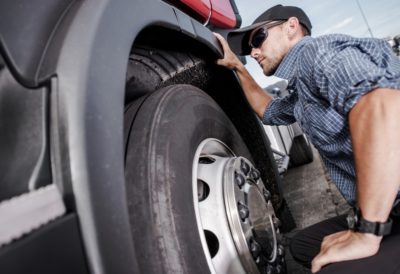

Being constantly on the road means that you will experience a roadside maintenance stop at some point. With all the unexpected conditions of trucking, an eventual breakdown is something you should prepare for.
Jumping a Dead Battery
You may have jumped a battery on a regular car before. However, there are some special considerations for trucks. Make sure you have a heavy-duty jumper cable designed to service trucks.
Jumper cables hold a lot of power, so always check any included instructions before using them. Make sure to keep the cables unbent and check them for excessive wear to prevent dangerous electrical shocks. Have the other driver park their vehicle with the hood open near yours. Then, switch both vehicles off. Find the positive (+, usually red) and negative (-, usually black) terminals on the battery.
Starting with the dead battery, connect the positive cables to the positive terminals and the negative cables to the negative terminals. The negative cable can also be connected to any metal on the vehicle being jumped. Give the battery at least five minutes to charge. See if the vehicle starts. If it does not, charge the battery for another five minutes before trying again. After the vehicle starts, disconnect the grounded negative cable, then from the negative terminal of the other vehicle, from the positive terminal of the other vehicle, and then the positive terminal of your vehicle.
Breaking Down
With frequent truck inspections, you are not likely to break down on the side of the road. However, trucking can be unpredictable, especially in extreme weather. If you have a breakdown, you will need to have some emergency tools on hand to keep yourself and others safe until assistance comes.
Pull over at the widest spot you can, easing slowly with your flashers on. Leave the flashers on and prop the hood up, as this lets other drivers know that you are broken down. Then, being cautious about oncoming traffic, get your hazard markers and place them on the road at 50, 100, and 150 feet
Contact dispatch as soon as you can and let them know what is going on. The main goal is to get out of the road as soon as you can to avoid causing an accident. It is also a good idea to have an emergency kit in your truck with emergency tools, extra blankets, and basic first aid. Above all, keep a cool head and make smart decisions to keep yourself and others on the road safe.






